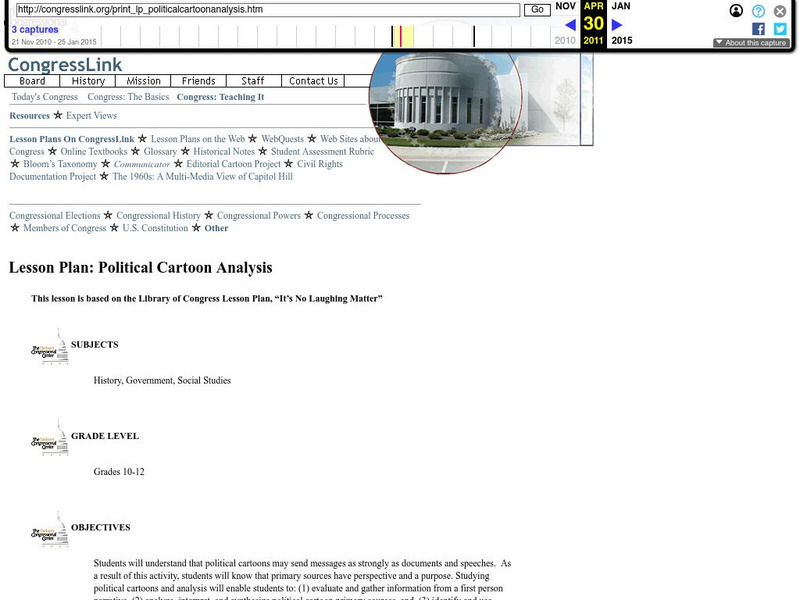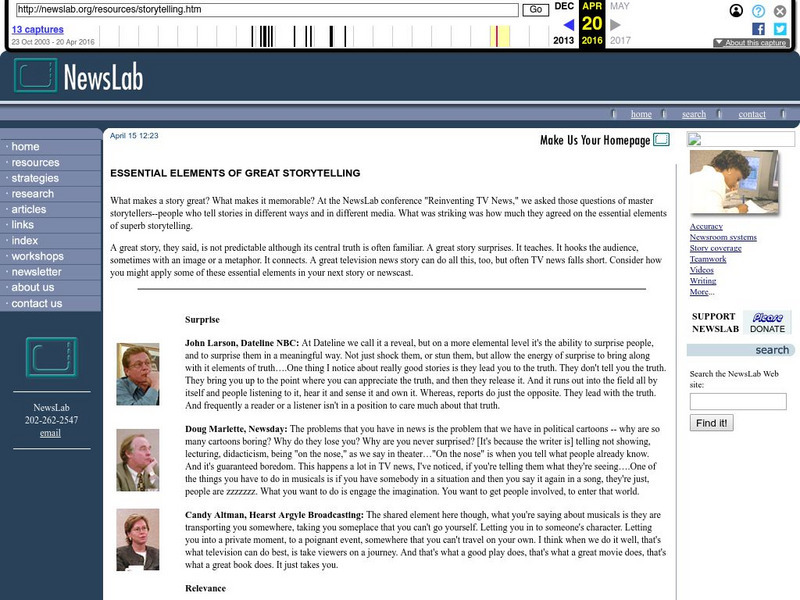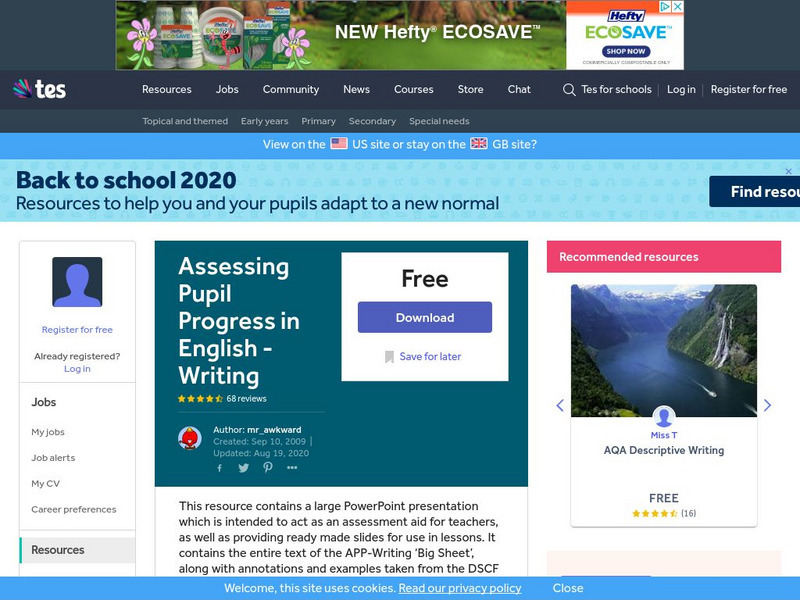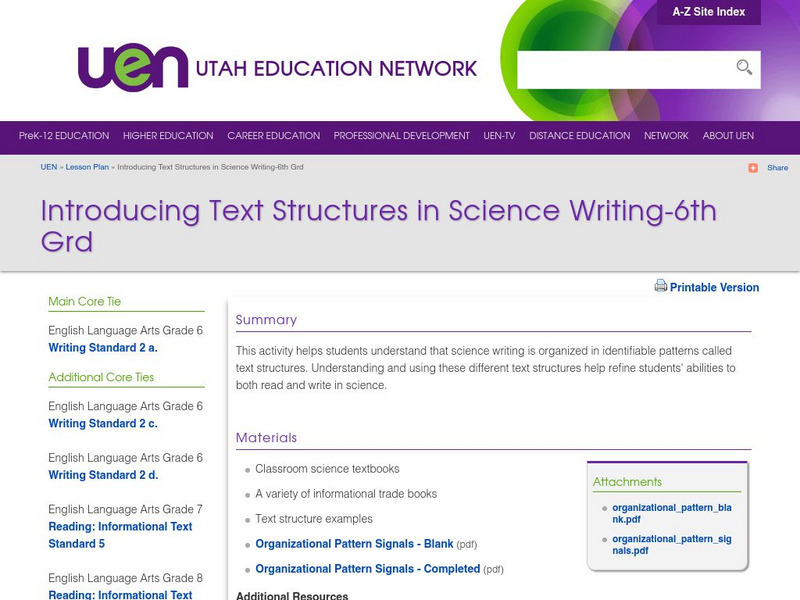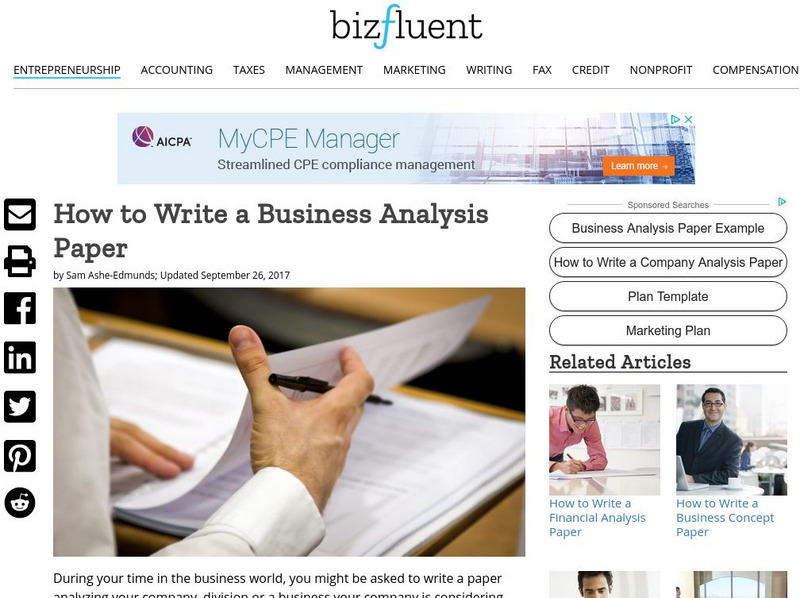Bryn Mawr College
Bryn Mawr College: Suggestions for Organizing and Writing Papers
This writing lab tutorial offers sound principles for writing papers, beginning with knowing your audience and objective. It covers patterns of organization, outlining, illustrations, writing, abstract, citations, and style.
Grammarly
Grammarly Handbook: Analysis
This page explains that analysis is crucial to the success of a paper as it answers the questions how and why and shows the reader that the writing is knowledgable. Logic and development work together to make the analysis clear. Examples...
Quia
Quia: Newsletter Parts
Match the part of the newsletter with its correct description in this interactive activity.
Bartleby
Bartleby.com: Newspapers Since 1860
A short summation of how Hearst and Pulitzer shaped the newspapers of their day by adding new features that would appeal to the populace.
ReadWriteThink
Read Write Think: How to Writing Motivating Students to Write for a Real Purpose
Contains plans for five fourth grade lessons that ask students to write essays for future fourth graders about how to have successful years. In addition to objectives and standards, this instructional plan contains links to sites used in...
ReadWriteThink
Read Write Think: Zines for Kids Multigenre Texts About Media Icons
Contains plans for nine lessons that ask students to create multigenre zines for popular culture figures that include letter, persuasive, narrative, acrostic poetry, comic, and biography/autobiography writing. To accomplish this,...
ReadWriteThink
Read Write Think: Purpose and Meaning of Political Cartoons
This lesson plan explores the political and social influence of political cartoons. Included in the lesson plan is an overview, practice, objectives, resources, preparation, and more.
ReadWriteThink
Read Write Think: The Big Bad Wolf: Analyzing Point of View in Texts
In this lesson, learners will research a fairy tale and analyze it based on the point of view. CCSS.ELA-Literacy.CCRA.R.6
Other
Dirksen Congressional Center: Political Cartoon Analysis
This lesson, designed for learners in grades 10-12, will develop an understanding of the messages that political cartoons communicate with readers. They will examine political cartoon primary sources as they investigate the question,...
Other
Geneseo: Writing an Editorial
An explanation of the parts of an editorial and the process involved in writing one.
Other
History Buff: Colonial America Newspapers and Transcripts
This site contains a brief history of newspapers in colonial America. Also provides links to the texts of the papers themselves, looking back at the actual words used in American Colonial newspapers.
Other
News Lab: Elements of Great Storytelling
This is a great site for broadcast journalists; it focuses on the elements that make a story great. You can find tips on writing from some of the top people in the industry.
TES Global
Tes: Prose: Short Stories
[Free Registration/Login Required] In this downloadable learning module, students will write a short story. Students will refer to the grading rubric to help them self-assess their writings. Students will revise and edit
TES Global
Tes: Assessing Pupil Progress in English: Writing
[Free Registration/Login Required] This PowerPoint provides exemplar pieces to guide students to understand how to revise a standardized, on-demand writing assessment piece.
Utah Education Network
Uen: Lesson Plan: Text Structures in Science Writing
Lesson for teaching students to identify components of scientific texts and to use similar structures in their own scientific writing.
Leaf Group
E How: How to Write a Business Analysis Paper
This article by Sam Ashe-Edmunds explains how to write a business analysis paper, an in-depth look at a business or company in terms of strengths, weaknesses, opportunities, threats, finances, employment, and attaining goals.
Read Works
Read Works: Portrait of a Journalist
[Free Registration/Login Required] An informational text about life as a journalist. A question sheet is available to help students build skills in reading comprehension.
Community Learning Network
Community Learning Network: Journalism Theme Page
This site from the Community Learning Network has great information on the art of journalism. The site is outlined by links for easy navigation and contains a rather exhaustive section on general resources. A great site to check out on...
Colorado State University
Writing@csu Guide: Understanding Writing Situations
In this guide, you can learn more about the situations in which writers and readers find themselves and the physical, social, cultural, and historical contexts that shape them. Click on each of the links on the right to learn about the...
Other
Kim's Korner: Definitions: Purposes for the Modes of Writing
What are the modes of writing? Use this site that details the different types of writing.
Education Development Center
Education Development Center: Tv411: Reading Structure of a News Story
Interactive lesson plan explains the content and organization of newspaper articles. Includes self-scoring exercises for practicing identifying the five W's (who, what, when, where, and why) in a series of brief news articles and a...
Education Development Center
Education Development Center: Tv411: Parts of a Newspaper
Students click through a lesson about the parts of a newspaper and answer questions about the types of articles found in each section, headlines, and captions that would go with photographs. Links to related videos are also provided.
Education Development Center
Tv411: Reading: Parts of a Newspaper
A series of three activities help readers become familiar with parts of a newspaper, from sections to headlines and captions.
ReadWriteThink
Read Write Think: Defining and Exploring an Author's Stylistic Choices
Contains plans for two lessons that teach young scholars how to recognize an author's use of style in literature. These plans use "Their Eyes Were Watching God" by Zora Neale Hurston as an example, but the basic ideas can be adapted to...









